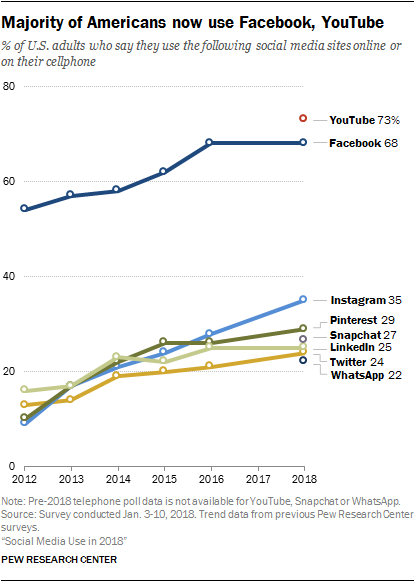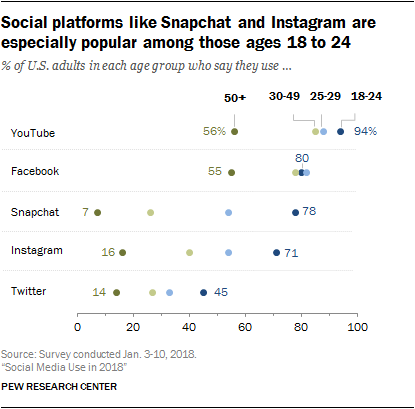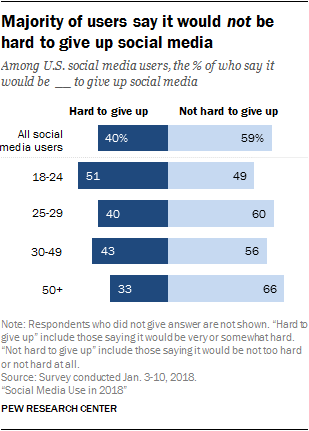May
2018
issues with live streaming social media
++++++++++++++++
more on Facebook Live in this IMS blog
Digital Literacy for St. Cloud State University
++++++++++++++++
more on Facebook Live in this IMS blog
Methods activate ‘same brain mechanisms as cocaine’ and leads to users experiencing ‘phantom’ notification buzzing, experts warn
Social media platforms are using the same techniques as gambling firms to create psychological dependencies and ingrain their products in the lives of their users, experts warn.
atasha Schüll, the author of Addiction by Design, which reported how slot machines and other systems are designed to lock users into a cycle of addiction.
Whether it’s Snapchat streaks, Facebook photo-scrolling, or playing CandyCrush, Schüll explained, you get drawn into “ludic loops” or repeated cycles of uncertainty, anticipation and feedback — and the rewards are just enough to keep you going.
Like gambling, which physically alters the brain’s structure and makes people more susceptible to depression and anxiety, social media use has been linked to depression and its potential to have an adverse psychological impact on users cannot be overlooked or underestimated.
Tech insiders have previously said “our minds can be hijacked” and that Silicon Valley is addicting us to our phones, while some have confessed they ban their kids from using social media.
However, the number of monthly active users of Facebook hit 2.13 billion earlier this year, up 14% from a year ago. Despite the furore around its data privacy issues, the social media monolith posted record revenues for the first quarter of 2018, making $11.97bn, up 49% on last year.
++++++++++++++
more on addiction in this IMS blog
https://blog.stcloudstate.edu/ims?s=addiction
++++++++++
more on social media in education in this IMS blog
https://blog.stcloudstate.edu/ims?s=social+media+education

++++++++++++++
more in this IMS blog on:
https://blog.stcloudstate.edu/ims?s=unplug
A majority of Americans use Facebook and YouTube, but young adults are especially heavy users of Snapchat and Instagram
http://www.pewinternet.org/2018/03/01/social-media-use-in-2018/
early 2018 is defined by a mix of long-standing trends and newly emerging narratives
Facebook and YouTube dominate this landscape, as notable majorities of U.S. adults use each of these sites. At the same time, younger Americans (especially those ages 18 to 24) stand out for embracing a variety of platforms and using them frequently. Some 78% of 18- to 24-year-olds use Snapchat, and a sizeable majority of these users (71%) visit the platform multiple times per day. Similarly, 71% of Americans in this age group now use Instagram and close to half (45%) are Twitter users

The video-sharing site YouTube – which contains many social elements, even if it is not a traditional social media platform – is now used by nearly three-quarters of U.S. adults and 94% of 18- to 24-year-olds.
a majority of users (59%) say it would not be hard to stop using these sites, including 29% who say it would not be hard at all to give up social media.


+++++++++++++++++++
more on social media use in this IMS blog
https://blog.stcloudstate.edu/ims?s=social+media+use
THURSDAY, MARCH 15, 2018 | 1:00 PM CENTRAL | 60 MINUTES
Instant communication with one another (and the world) has tremendous benefits. At the same time, it has serious drawbacks that tend to offset those advantages. The evidence is mounting that students’ overreliance on their cherished devices is interfering with their critical thinking and problem-solving skills, ultimately impacting their emotional health, mental health, and academic performance.
How can your institution assist students in the digitally-obsessed information age?
Register today for the Magna Online Seminar, Students and Social Media: How Much is Too Much?, presented by Aaron Hughey, EdD. You’ll explore ways to develop and implement a blueprint for effectively assisting students who are experiencing emotional and mental challenges due to their overindulgence in social media.
Through the evidence-based best practices and insights gleaned through this seminar, you’ll be able to respond more effectively to the needs of students who are experiencing emotional and mental health challenges due to their overinvolvement with social media.
Upon completion of this seminar, you’ll be able to:
This seminar is designed for anyone at any institution who is responsible for the mental and emotional well-being of college students, especially faculty, administrators, and staff of departments that provide direct services to students, including college counseling centers, student health centers, career and academic advising services, housing and residence hall professionals and paraprofessionals, student activities and organizations, academic support services, and programs and services for at-risk students.
+++++++++++++++
more on social media and students in this IMS blog
https://blog.stcloudstate.edu/ims?s=social+media+students
++++++++++++++++
more on cybersecurity in this IMS blog
https://blog.stcloudstate.edu/ims?s=security
more on privacy in this IMS blog
https://blog.stcloudstate.edu/ims?s=privacy